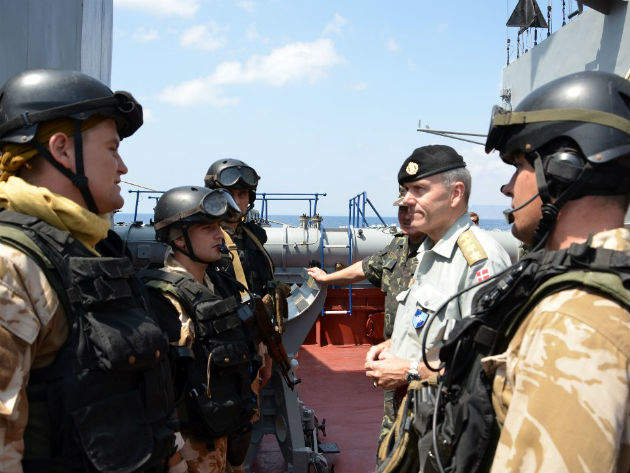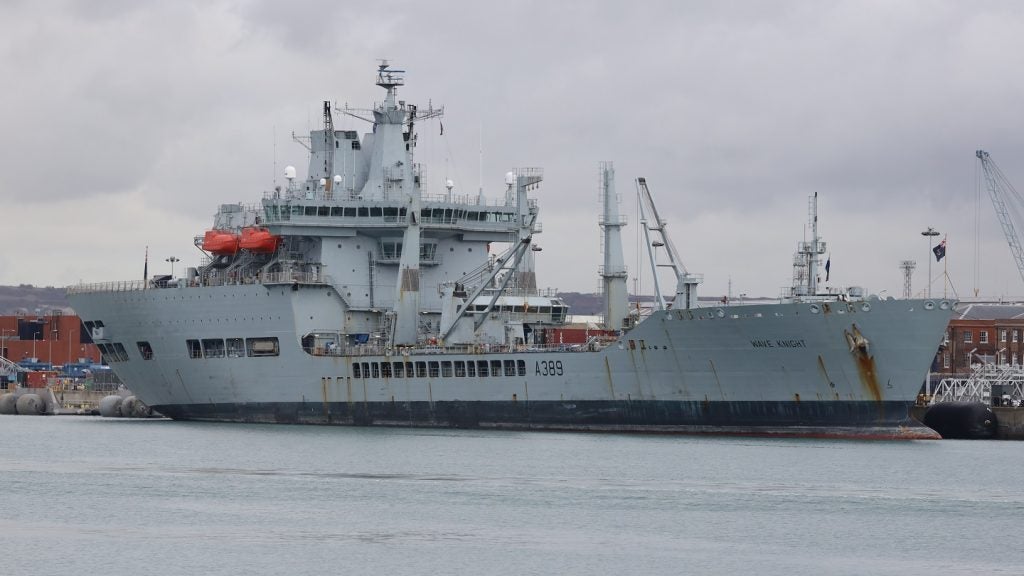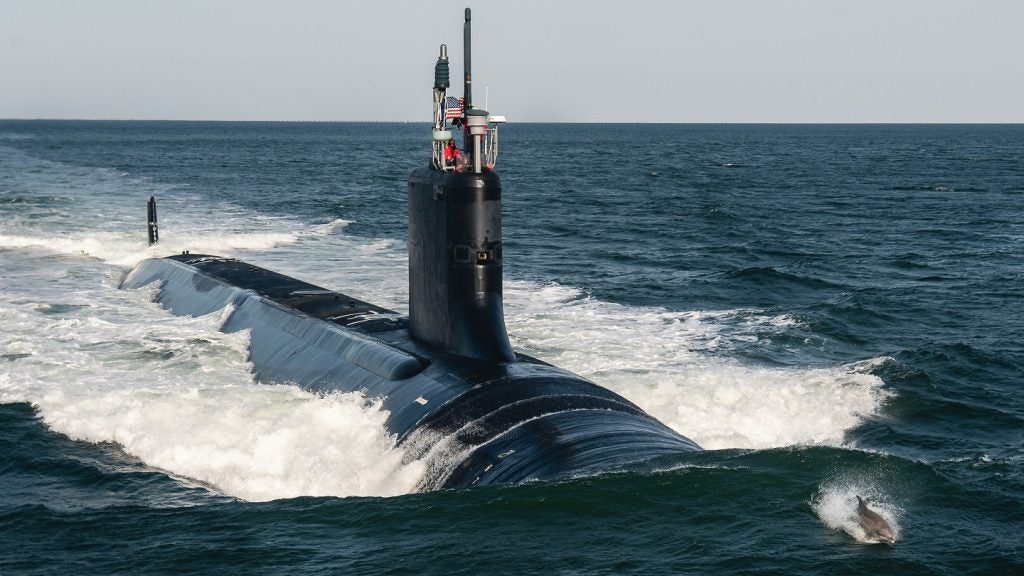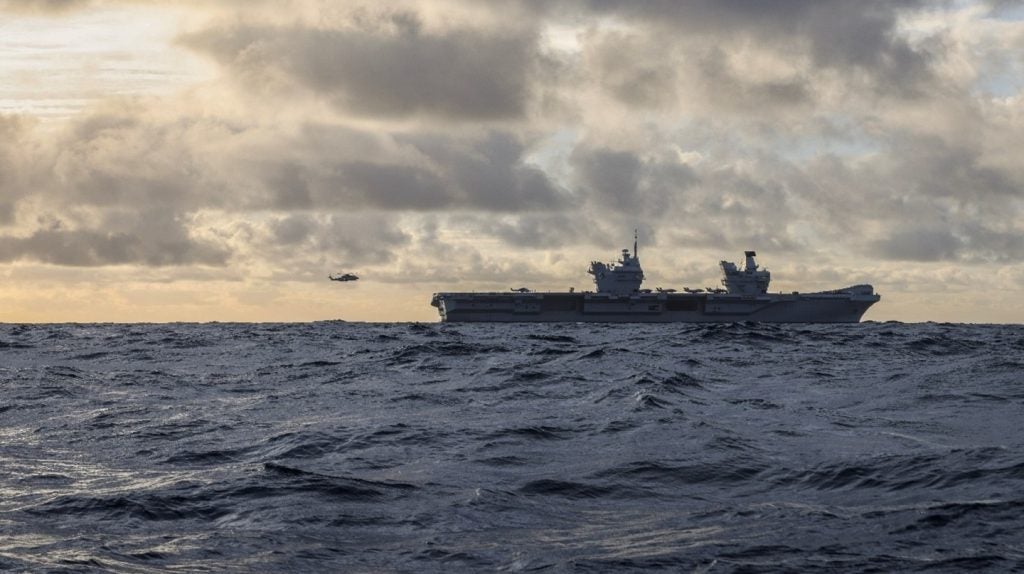
 Since the end of NATO’s Operation Ocean Shield, two ships have been hijacked within two weeks near the cost of Somalia – a development that has raised questions over the success of the mission. The mission has been one part of a highly successful coordinated international response to the threat of piracy off the Somalia coast that, at its peak, caused economic damage of $7bn and multiple casualties – but it seems as if the war against piracy in the region is far from over. Dr Gareth Evans reviews pas efforts and asks what steps can be taken to ensure continued peace and safety in Somalia.
Since the end of NATO’s Operation Ocean Shield, two ships have been hijacked within two weeks near the cost of Somalia – a development that has raised questions over the success of the mission. The mission has been one part of a highly successful coordinated international response to the threat of piracy off the Somalia coast that, at its peak, caused economic damage of $7bn and multiple casualties – but it seems as if the war against piracy in the region is far from over. Dr Gareth Evans reviews pas efforts and asks what steps can be taken to ensure continued peace and safety in Somalia.
When NATO formally drew its counter-piracy mission in the waters off the Horn of Africa to a close in December 2016, it brought to an end almost eight years of action to help keep one of the world’s most important shipping lanes open for business. The mission was lauded a success, having helped to drastically reduce the number of incidents in the region, where no commercial vessel was captured between May 2012 and the operation’s conclusion in December 2016.
However, just three months into 2017, two hijacking incidents have been reported near the coast of Somalia within just two weeks.
In light of these new developments, can Operation Ocean Shield really be called a success, or is the immediate resurgence of pirate activity off Somalia a sign that an ongoing, international effort will be needed to keep the peace in the region?
Mission success?
Operation Ocean Shield arose as part of the international response to a major hijacking-for-ransom industry that developed in the chaos of the long civil war in Somalia, and which, at its height, cost the global shipping industry around $7bn a year, and a number of unfortunate sailors their lives. Over 1,000 more were held hostage, often for months or even years, while the average ransom demand for the safe return of them and their ship spiralled from $150,000 in 2005 to $5.4 just five years later, when Somali pirates netted nearly $240m, much of which subsequently ended up in the hands of Islamist militants.
In 2010 alone – the peak year for piracy in the region – NATO recorded 45 actual hijackings, 132 attempted, but ultimately unsuccessful, attacks, and 147 ‘disruptions’ where international military intervention forced pirates to abandon their actions. By the time the Royal Danish Air Force flew its Challenger CL-604 aircraft on its last NATO-badged surveillance mission, those totals had dropped to zero, and many pirates had been detained and prosecuted by national authorities.
How well do you really know your competitors?
Access the most comprehensive Company Profiles on the market, powered by GlobalData. Save hours of research. Gain competitive edge.

Thank you!
Your download email will arrive shortly
Not ready to buy yet? Download a free sample
We are confident about the unique quality of our Company Profiles. However, we want you to make the most beneficial decision for your business, so we offer a free sample that you can download by submitting the below form
By GlobalDataDescribed as one of the alliance’s most successful operations ever, Ocean Shield has been widely credited with playing a pivotal role in restoring safe passage for vessels in the Indian Ocean. But with NATO bowing out, it appears that a resurgence of piracy in the region is inevitable.
Sending the wrong message
“NATO withdrawal certainly sends the wrong message to the pirate investors and the actual pirates themselves,” warns former Royal Navy Captain Gerry Northwood OBE, who was head of plans at the inception of Operation Atalanta, the EU’s own anti-piracy mission off the Somali coast.
Now COO of the maritime security company MAST, Northwood sees the risk today as systemic, in that neither the European Union nor NATO have many vessels to spare for counter-piracy patrols in the Indian Ocean. “Consequently, the number of warships and aircraft available to patrol the Gulf of Aden and the wider Indian Ocean is significantly down on what it was back in 2009 to 2011,” he says.
In many respects, this has been a long time coming, as the growth of operations in the Black Sea, the Baltic and the Mediterranean combined with the defence cuts post-2008 have increasingly stretched NATO’s capabilities and significantly limited the number of warships available.
The end of Operation Ocean Shield effectively now leaves the Indian Ocean counter-piracy mission to EUNAVFOR and the US-led coalition, but while Northwood has described NATO’s move as giving “succour to those who mean seafarers harm”, he does not believe it will automatically make life easier for the pirates. “NATO and EUNAVFOR were largely sharing warships anyway,” he explains, “so NATO pulling out will not in itself have radically reduced the number of patrol assets.”
Key to success
It seems that it all comes down to having the force flow – the availability of warships – to maintain operations in and around the Gulf of Aden.
That clearly contributed to the success of Operation Ocean Shield during its heyday. Run from NATO’s Maritime Command Headquarters in Northwood, UK, the mission was supported by all of the members either directly by providing ships and maritime patrol aircraft to be assigned on a rotational basis or indirectly, through the alliance’s command structures and common funding. With the additional support of NATO’s partners, notably Ukraine and New Zealand, on average three to five NATO ships were available to take part at any one time.
However, force flow was not the only factor behind Operation Ocean Shield achieving its goal, as Northwood points out. “The much closer relationship developed between the militaries and commercial sector has been the key to success. NATO, along with EUNAVFOR and the US-led coalition, took a leading role in developing those relationships.”
Lesson for the future
Out of these relationships grew the application of a highly effective risk management framework for protecting commercial vessels, including the establishment of Best Management Practices for Protection (BMP 4), an Internationally Recommended Transit Corridor (IRTC) and the adoption of group transits. There is an important lesson for the future here, Northwood believes.
“We should have confidence to recognise that multi-national, multi-agency frameworks do work and can be made to work well,” he says. “Without the international community – led by the UN, US, UK, NATO and the EU – taking overarching responsibility for the safety of vessels in the Indian Ocean, Somali piracy would not have been suppressed in the way it was.”
Pirate revival?
That not a single commercial vessel was captured between May 2012 and the end of Operation Ocean Shield shows just how effectively it was done, but recent events have proven that the pirates are not that easily defeated. Sixteen months before NATO ended its involvement, government officials in northern Somalia were already warning that unless the international community did more to help create jobs and establish greater security onshore, a revival of piracy could well be on the cards.
There have been suggestions that one of the main drivers on the hijackings in the first place was illegal fishing and dumping of toxic waste in Somali waters, prompting the local fishermen to set up as unofficial amateur ‘coastguards’ to protect their environment and livelihoods. While the targets chosen and the methods employed may seem somewhat at odds with those claims, there is no denying that the economic and political situation in the country was dire then, and is little better now, despite international efforts to improve things.
With the conditions that first spawned the problem still there, vigilance clearly remains essential. As spokesperson Oana Lungescu said in a statement announcing the end of Ocean Shield “NATO will continue to keep a close eye on the situation in the region and stands ready to restart our patrols should they be needed.”
Future security framework
Irrespective of the colours under which they operate, patrolling naval forces provide the international shipping community with a strategic security framework – offering everything from intelligence networks to the maritime equivalent of a policeman on the beat.
While this is an important part of combating the potential threat from piracy, Northwood explains that as with all crime, it is also important that individual owners of high-value assets take appropriate measures to protect them themselves. The use of armed guards aboard ships and a range of other defensive measures outlined in BMP 4, coupled with taking full advantage of the services offered by the likes of the British and EU maritime security organisations, should be viewed as a matter of course.
“Without that, there is a risk the Somalis will once again discover that kidnap and ransom of commercial shipping is a sure route to easy money,” he says. “Meanwhile, the international community must do everything it can to keep Somalia progressing toward becoming a responsible and functioning nation state.”







